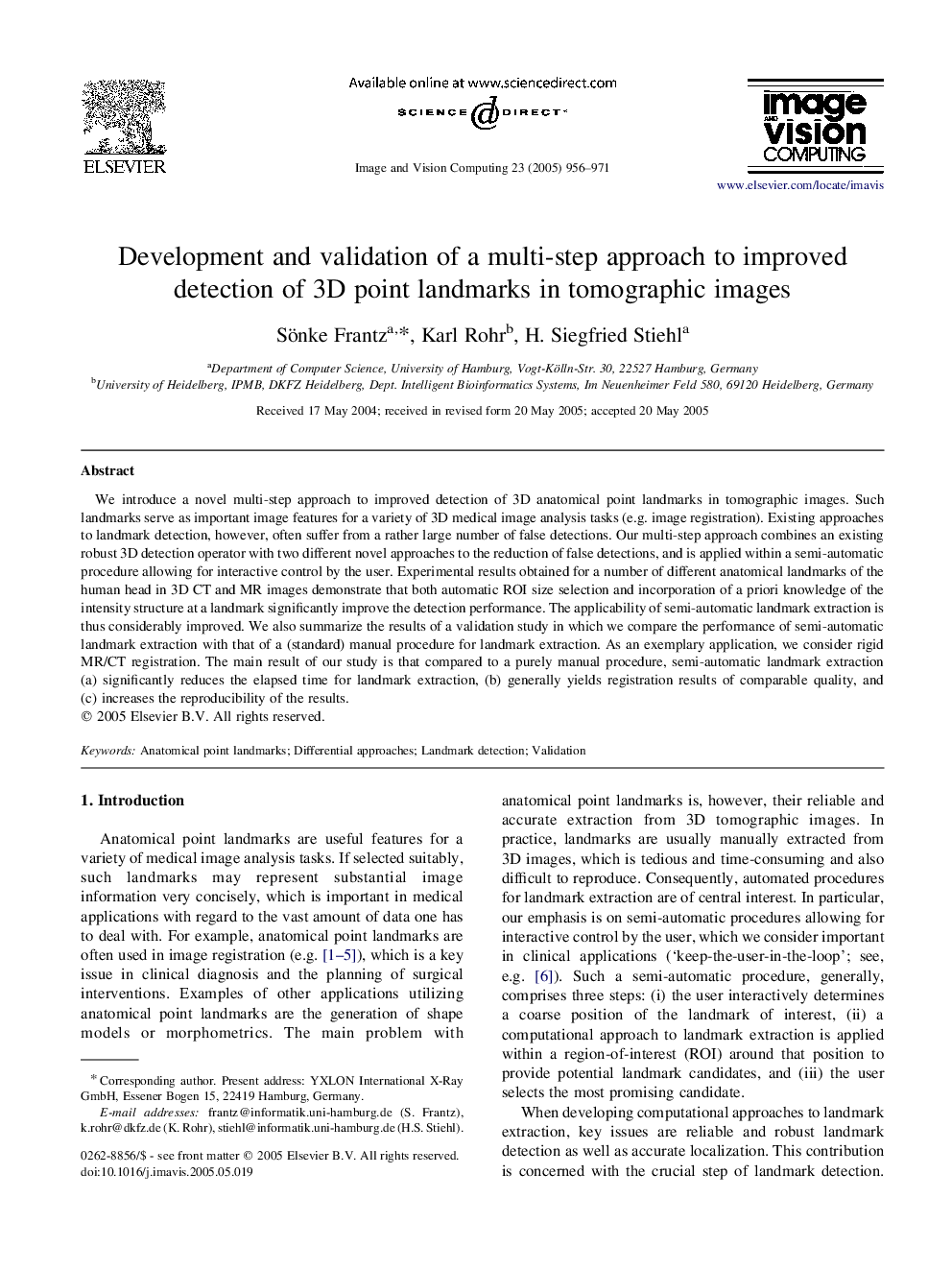| Article ID | Journal | Published Year | Pages | File Type |
|---|---|---|---|---|
| 10359515 | Image and Vision Computing | 2005 | 16 Pages |
Abstract
We introduce a novel multi-step approach to improved detection of 3D anatomical point landmarks in tomographic images. Such landmarks serve as important image features for a variety of 3D medical image analysis tasks (e.g. image registration). Existing approaches to landmark detection, however, often suffer from a rather large number of false detections. Our multi-step approach combines an existing robust 3D detection operator with two different novel approaches to the reduction of false detections, and is applied within a semi-automatic procedure allowing for interactive control by the user. Experimental results obtained for a number of different anatomical landmarks of the human head in 3D CT and MR images demonstrate that both automatic ROI size selection and incorporation of a priori knowledge of the intensity structure at a landmark significantly improve the detection performance. The applicability of semi-automatic landmark extraction is thus considerably improved. We also summarize the results of a validation study in which we compare the performance of semi-automatic landmark extraction with that of a (standard) manual procedure for landmark extraction. As an exemplary application, we consider rigid MR/CT registration. The main result of our study is that compared to a purely manual procedure, semi-automatic landmark extraction (a) significantly reduces the elapsed time for landmark extraction, (b) generally yields registration results of comparable quality, and (c) increases the reproducibility of the results.
Keywords
Related Topics
Physical Sciences and Engineering
Computer Science
Computer Vision and Pattern Recognition
Authors
Sönke Frantz, Karl Rohr, H. Siegfried Stiehl,
